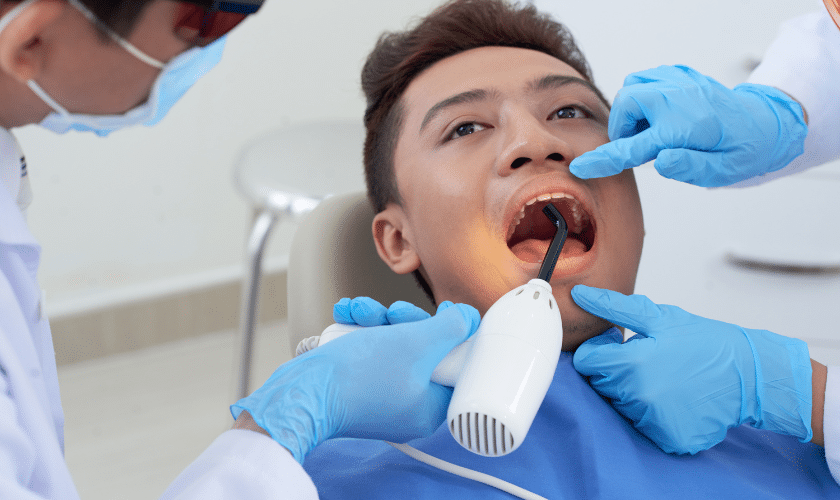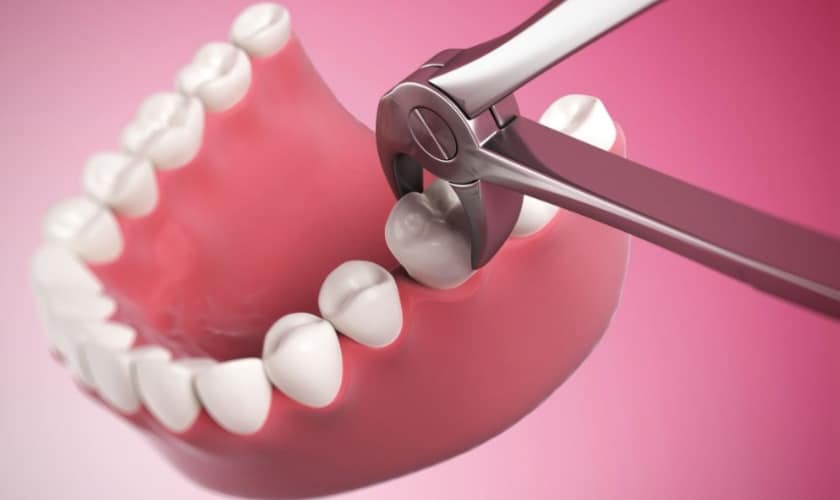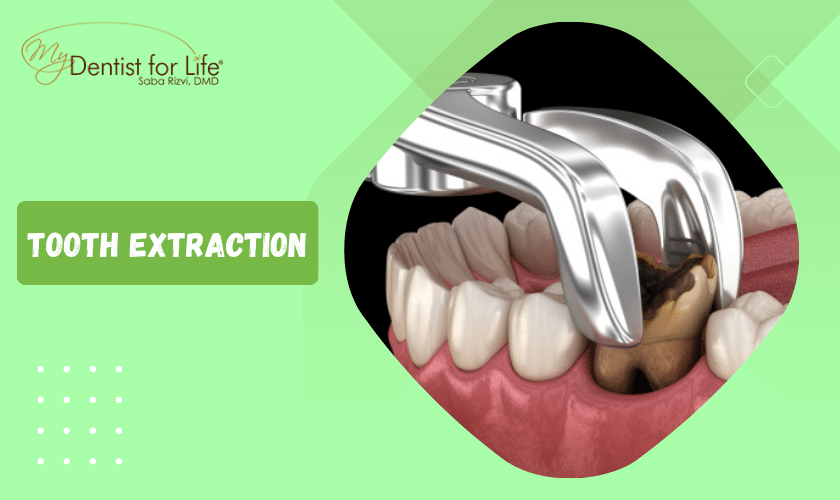ONLINE SCHEDULING AND VIRTUAL CONSULTS AVAILABLE

Dry Socket After Extraction: Signs, Symptoms, and How to Find Relief

Toothaches are no fun, and sometimes, tooth extraction is the best course of action. While the procedure itself might be uncomfortable, most people heal quickly and experience minimal pain afterward. However, there’s a potential complication called dry socket that can throw a wrench into your recovery. This blog dives deep into dry socket, explaining what it is, the signs and symptoms to watch out for, and most importantly, how to find relief.
Understanding Dry Socket
After tooth extraction, a blood clot forms naturally in the empty socket, creating a protective barrier for the underlying bone and nerves. This clot is crucial for proper healing. A dry socket, also known as alveolar osteitis, occurs when this blood clot dislodges prematurely or fails to form altogether. The exposed bone and nerves become extremely sensitive, leading to intense pain and delayed healing. While not a common occurrence, dry sockets affect roughly 2-5% of people who undergo tooth extraction in Plantation, FL, with wisdom teeth extractions carrying a slightly higher risk.
Signs and Symptoms of Dry Socket
A dry socket, while not a pleasant experience, is a treatable complication that can occur after a tooth extraction. The good news is that it typically develops within a predictable timeframe, allowing for early intervention. Here’s a breakdown of the key signs and symptoms to watch out for:
Throbbing Pain
The pain associated with a dry socket isn’t your average post-extraction discomfort. It’s a throbbing, intense ache that progressively worsens over time. Imagine a dull toothache that morphs into a persistent, pulsating sensation. This pain isn’t confined to the extraction site alone. It often radiates outwards, traveling up to your ear, jaw, or temple on the same side as the removed tooth. This radiating pain can be quite disorienting and contribute to a feeling of a general facial ache.
Exposed Bone
Normally, after a tooth extraction, a blood clot forms in the socket to aid healing. With a dry socket, this crucial clot dislodges or fails to develop, leaving the underlying bone exposed. If you carefully look into the socket with a mirror, you might see a white or yellow area instead of the expected dark red clot. This exposed bone is a telltale sign of a dry socket.
Bad Breath (Halitosis)
Due to the exposed bone and lack of a protective clot, food particles, and bacteria can accumulate more easily in the socket. This can lead to the development of bad breath, medically known as halitosis. The bad breath associated with dry sockets often has a distinct foul odor that can be quite unpleasant for you and those around you.
Metallic Taste
Along with bad breath, dry sockets can also cause an unpleasant taste in your mouth. This taste is often described as metallic, leaving a lingering sensation that can be bothersome. The metallic taste is thought to result from the exposed bone and the breakdown of blood products in the socket.
Swelling
While swelling is a more common symptom after a tooth extraction, it can also occur with a dry socket. However, swelling associated with dry sockets is usually less pronounced compared to the initial post-extraction swelling.
Risk Factors for Dry Socket
Certain factors can increase your risk of developing a dry socket. Here are some to be aware of:
- Smoking and tobacco use: Smoking constricts blood vessels, hindering blood clot formation and healing.
- Poor oral hygiene: Bacteria in the mouth can interfere with clot formation and increase the risk of infection, further delaying healing.
- Dry mouth: Conditions that cause dry mouth, like certain medications or Sjögren’s syndrome, can hinder clot formation.
- Complex tooth extraction: Removing a deeply rooted or impacted tooth may increase the risk of disrupting the blood clot.
- Certain medical conditions: Diabetes and osteoporosis can affect healing and increase the risk of dry sockets.
Finding Relief From Dry Socket
A dry socket is a painful complication that can occur after a tooth extraction. If you suspect you might have it, seeking immediate dental attention is crucial. Early intervention minimizes discomfort and ensures proper healing. Here’s a more detailed breakdown of what to expect during your visit:
Examination
Your dentist will meticulously examine your mouth using specialized tools to get a clear view of the extraction site. They’ll be looking for specific signs of dry socket, such as:
- Exposed bone: The blood clot that’s supposed to cover the socket might be dislodged, revealing underlying bone tissue. This exposed bone has a whitish-gray appearance.
- Inflammation: The gum tissue surrounding the socket may appear red, swollen, and tender.
- Bad breath: Due to the exposed bone and the potential presence of bacteria, there might be unpleasant breath odor.
Cleaning and Soothing the Socket
The dentist will likely use a gentle stream of water or saline solution to clean the socket carefully. This irrigation removes any food particles, debris, or bacteria that could be irritating the exposed bone and hindering healing.
Pain Management
To manage the discomfort associated with dry sockets, your dentist might recommend over-the-counter pain relievers like ibuprofen or acetaminophen. They will advise on appropriate dosage and frequency to ensure effective pain relief.
Promoting Healing and Reducing Discomfort
Following a teeth extraction in Plantation, FL, it’s normal to experience some soreness and discomfort. However, a complication called dry socket can cause significantly more pain and hinder the healing process. Let’s delve deeper into how medicated dressings and other treatments can help manage dry sockets and get you back on the road to recovery.
- Maintain good oral hygiene: Gently brush and floss your teeth as instructed by your dentist, avoiding the extraction site for the first few days.
- Avoid smoking and tobacco products: Smoking hinders healing and increases the risk of dry sockets.
- Use a saltwater rinse: Mix half a teaspoon of table salt with warm water and gently rinse your mouth several times a day, especially after meals.
- Maintain a soft diet: For the first few days, stick to soft, non-chewy foods to avoid irritating the extraction site.
- Avoid strenuous activity: Avoid strenuous exercise or activities that could increase your heart rate and potentially dislodge the blood clot.
While painful, a dry socket is a treatable complication. By being aware of the signs and symptoms and diligently following your dentist’s post-operative instructions, you can significantly reduce your risk of experiencing it. So, if you want a hassle-free tooth extraction in Plantation, FL, and want to avoid the risks of dry socket, schedule an appointment with our dental team at My Dentist for Life of Plantation—we’re here to help!




